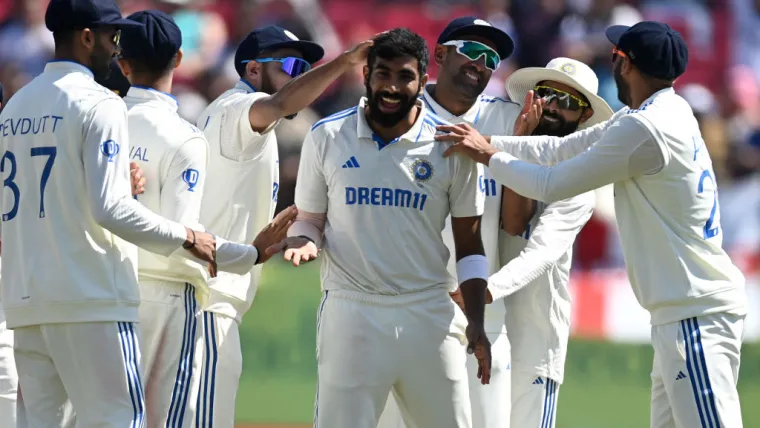Over Rate Rules in Cricket: Defining and Penalizing the Slow Over Rate
The Over Rate is a crucial metric in professional cricket, measuring the average number of overs delivered by the bowling side within a set time period. A slow over rate occurs when a team fails to meet the minimum required overs per hour (OPH) set by the specific match regulations.
This transgression is penalized heavily across all formats to maintain the pace of the game for spectators and prevent the fielding team from gaining an unfair advantage by disrupting the batting rhythm.

Defining Slow Over Rate Across Formats
The required minimum over rate is determined by the length and structure of the match, balancing time allocation with the necessity for player breaks.
Test Cricket (ICC World Test Championship)
- Required Rate: The minimum rate required is 15 overs per hour of play. This means that over a standard six-hour day, a minimum of 90 overs should be bowled.
- Calculation: The rate is calculated at the end of the match based on the average achieved across the entire duration of both opposition innings.
- Flexibility: Allowances are factored in for legitimate delays, including Drinks Breaks (typically four minutes each), time taken for Wickets Taken (allowance for a new batter to arrive), DRS reviews, and unscheduled stoppages for injury treatment. If overs are lost due to slow play, the time is not recouped, but play may be extended by up to 30 minutes in the evening session to try and complete the scheduled overs.
One Day Internationals (ODI)
- Required Rate: The minimum required rate is 14.28 overs per hour. This ensures the full complement of 50 overs is bowled within the allocated time (typically 3.5 hours).
Twenty20 Internationals (T20I)
- Required Rate: The minimum rate is 14.11 overs per hour. This ensures the 20 overs are completed within the designated time frame (typically 1 hour and 25 minutes).
- Domestic Leagues (e.g., IPL): Domestic leagues like the Indian Premier League (IPL) often have slightly higher effective rates, as they must complete the 20 overs within 1.5 hours, which includes factoring in fixed breaks like the two strategic timeouts.
Penalties for Slow Over Rate
Penalties have become increasingly severe, moving beyond simple monetary fines to include sanctions that directly affect the result of the match and a team’s standing in major competitions.
Penalties in Test Cricket
Sanctions in the ICC World Test Championship (WTC) are the most significant:
- Points Deduction: For every full over a team falls short of the minimum required over rate across the match, one WTC point is deducted from their total points tally. This severe penalty can directly determine whether a team qualifies for the WTC Final.
- Match Fee Fines: All 11 players in the fielding side are typically subject to a fine, often 5 percent of their match fee for every over they are short, capped at 50 percent. Previously, repeat offences led to the captain being suspended, but recent ICC changes aim to distribute responsibility across the whole team.
Penalties in Limited Overs Cricket
Penalties in ODI and T20 cricket often include both financial sanctions and significant in-match penalties that strategically disadvantage the fielding team:
- Fielding Restrictions: The most impactful penalty is the restriction on the outfield. For every over that is not started by the scheduled cut-off time, the bowling team is required to bring an extra fielder from the deep outfield (outside the 30-yard fielding circle) and place them inside the circle for the remainder of the innings. This makes it significantly easier for the batters to score boundaries.
- Penalty Runs (Trialled): The ICC has recently trialled the use of awarding five penalty runs to the batting side if the bowling team fails to be ready to bowl the next over within 60 seconds of the previous one ending, often triggered after two prior warnings. This measure is intended to speed up the transition between overs.
Justification and Calculation of Allowances
Penalties are enforced to maintain the Spirit of Cricket and deliver value to spectators, but the governing bodies ensure that teams are not penalized for delays outside their control.
Calculation Allowances
Match officials meticulously track time lost due to factors that slow the over rate but are not the fault of the bowling team. These allowances are subtracted from the total time elapsed:
- Injury Stoppages: Time taken for on-field treatment or when a player leaves the field due to injury.
- Referrals and Reviews: Time consumed by the Third Umpire during DRS reviews.
- Wicket Fall: An allowance of approximately two minutes is given for every wicket taken, allowing the new batter time to reach the crease.
- Batting Side Delays: Any deliberate time-wasting or delays caused by the batting side (e.g., unnecessary calls for new gloves, persistent movement across the crease) are also taken into account and factored against the batting team’s time.
The system of penalties, whether through WTC point deductions or in-match fielding restrictions, is designed to compel teams to uphold the minimum required over rate, preserving the competitiveness and pace of the game for both the professional players and the paying public.

Rivcky John
A prominent figure in sports journalism for the last two decades. Cricket Analyst & Writing News, Features, Match Previews/Reviews/Reports, And Opinion Pieces on Cricket. You can connect with him on Facebook also.
